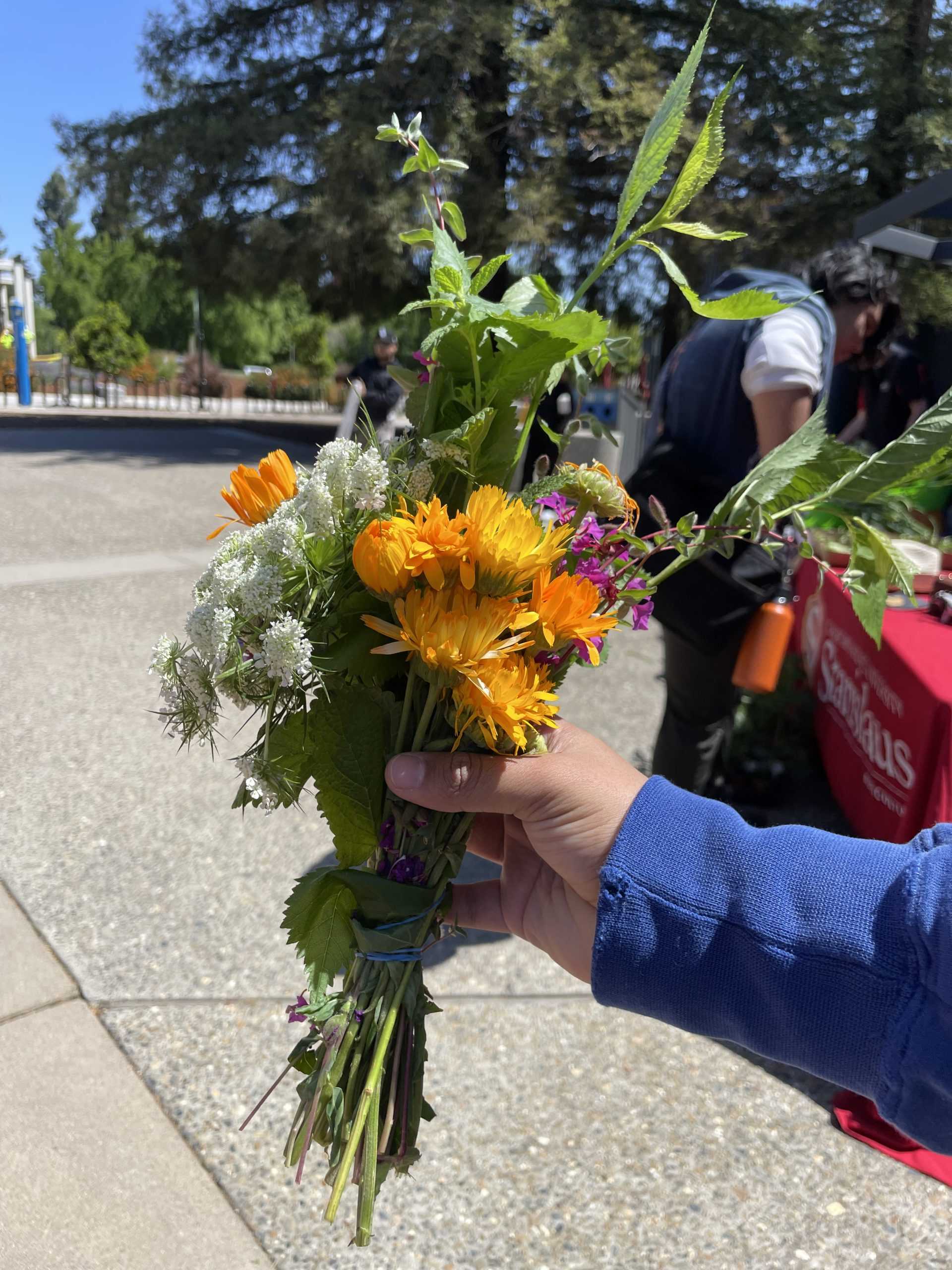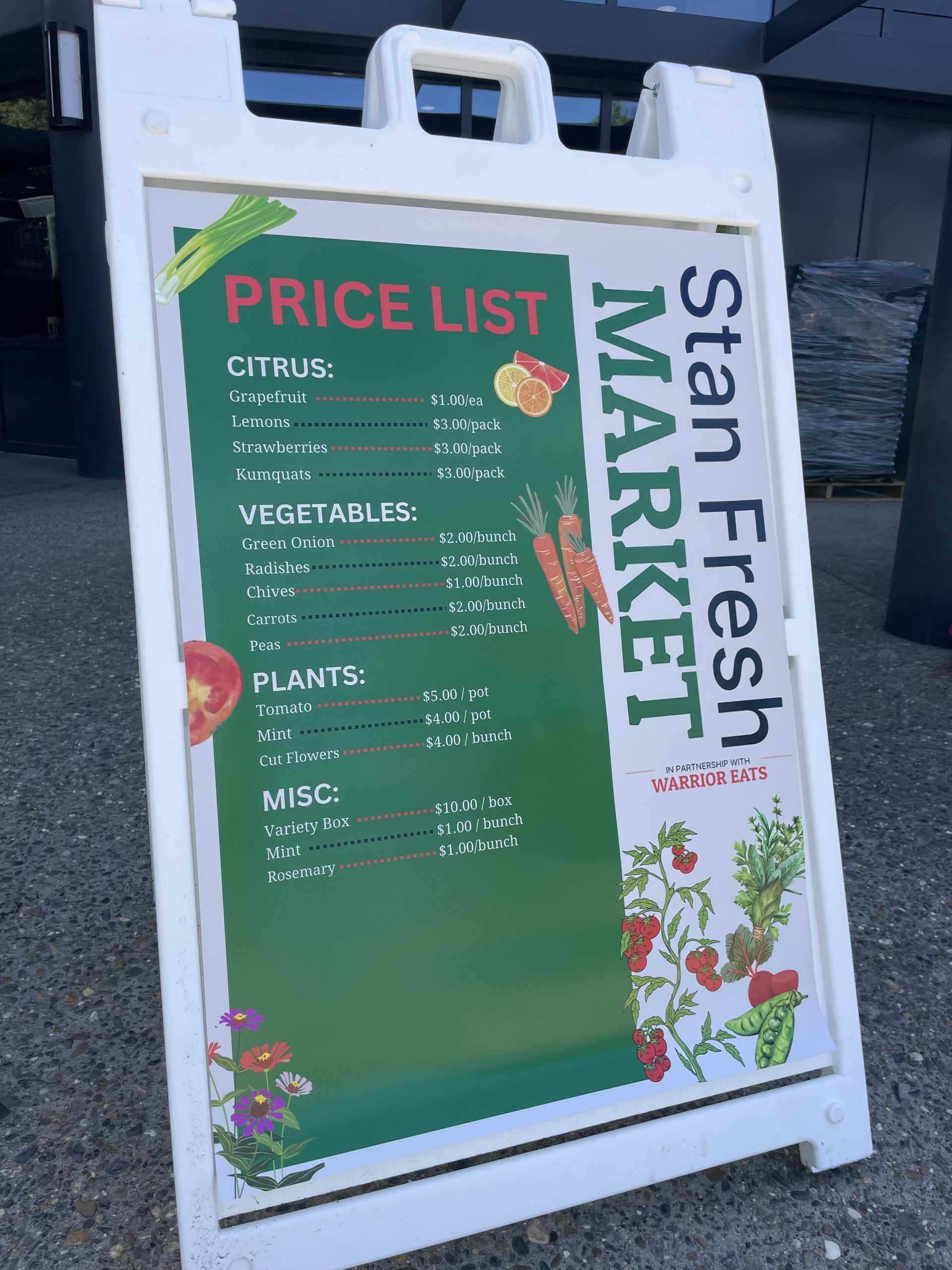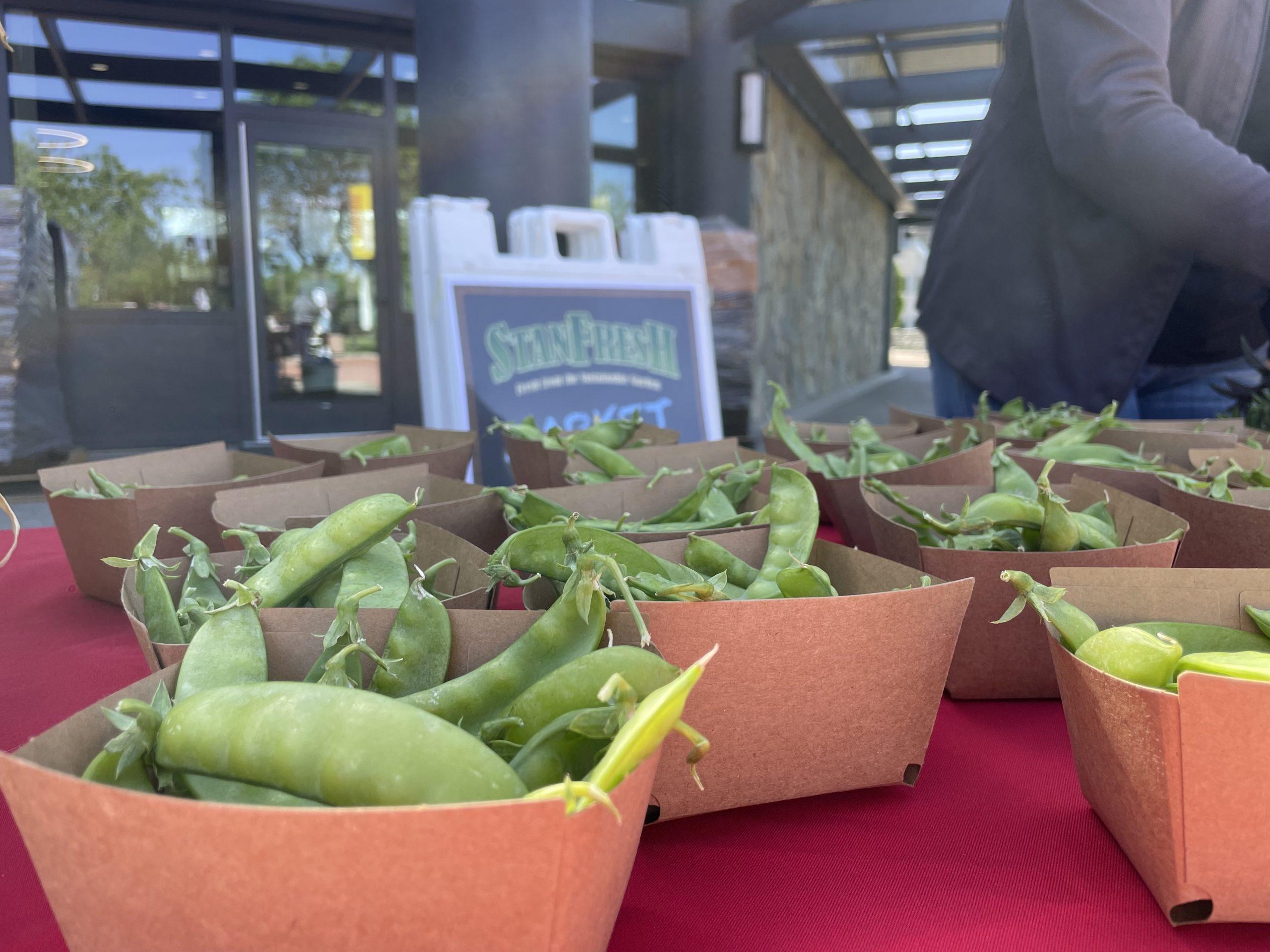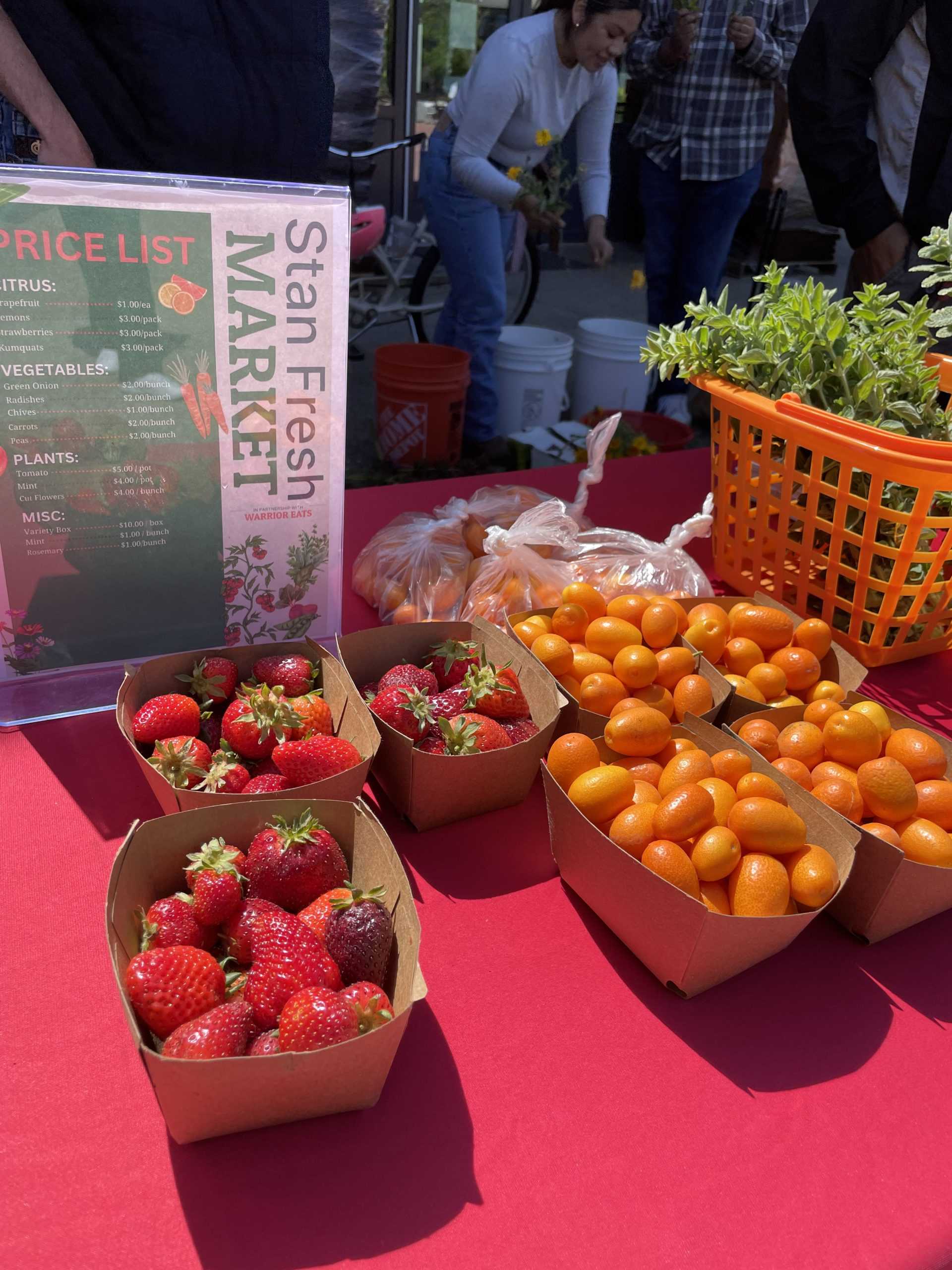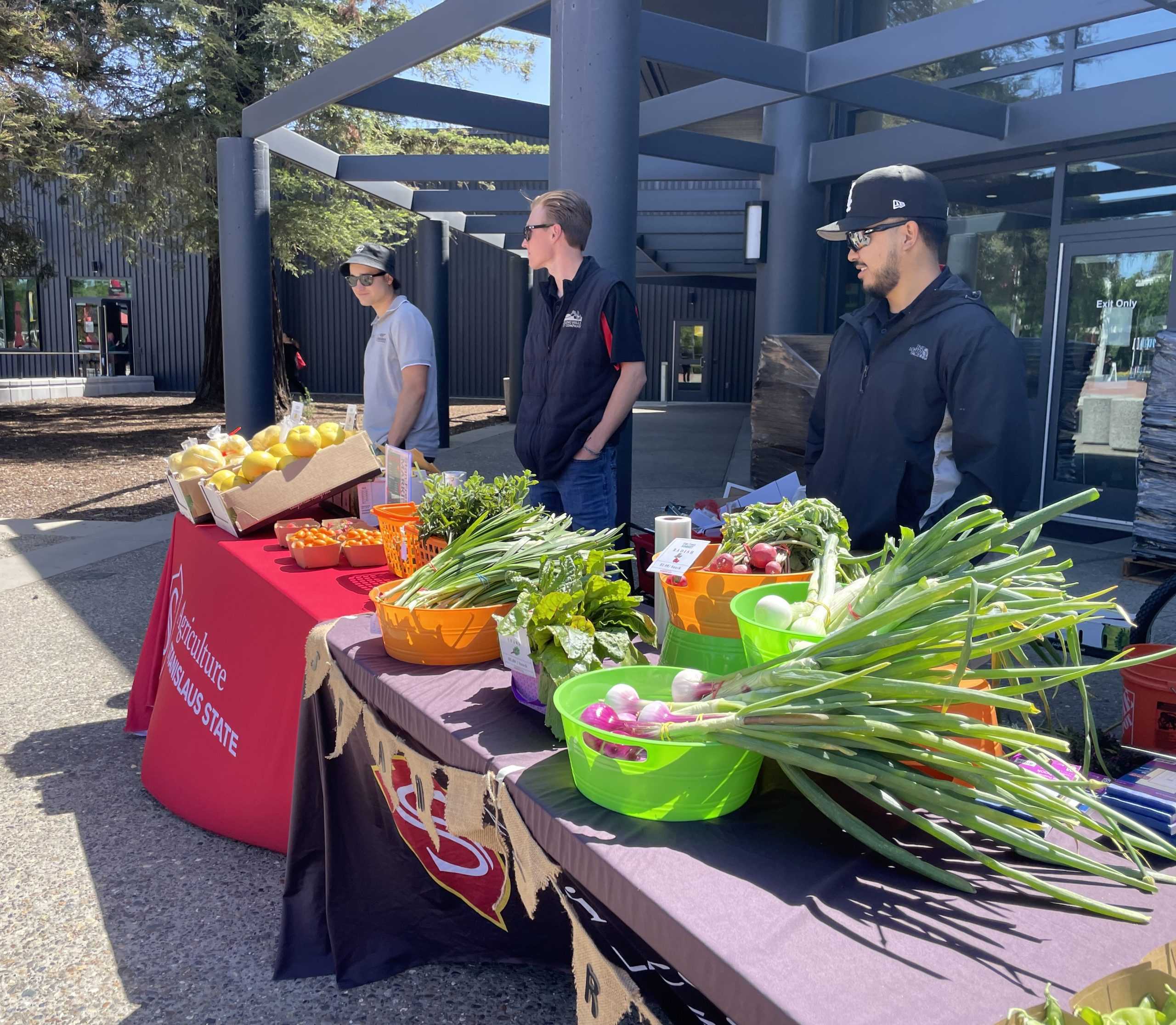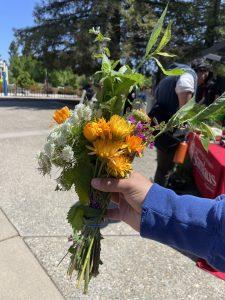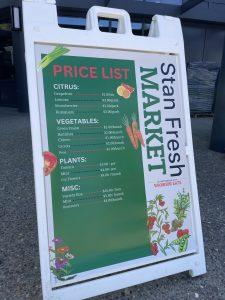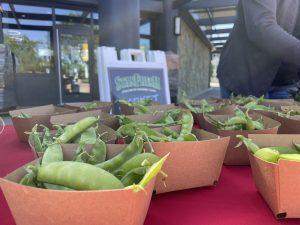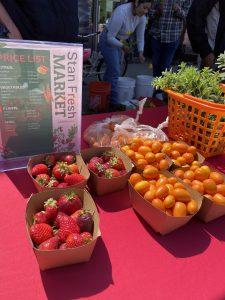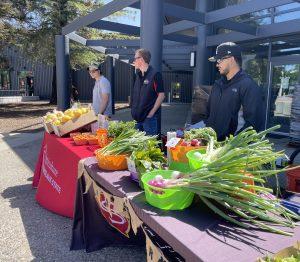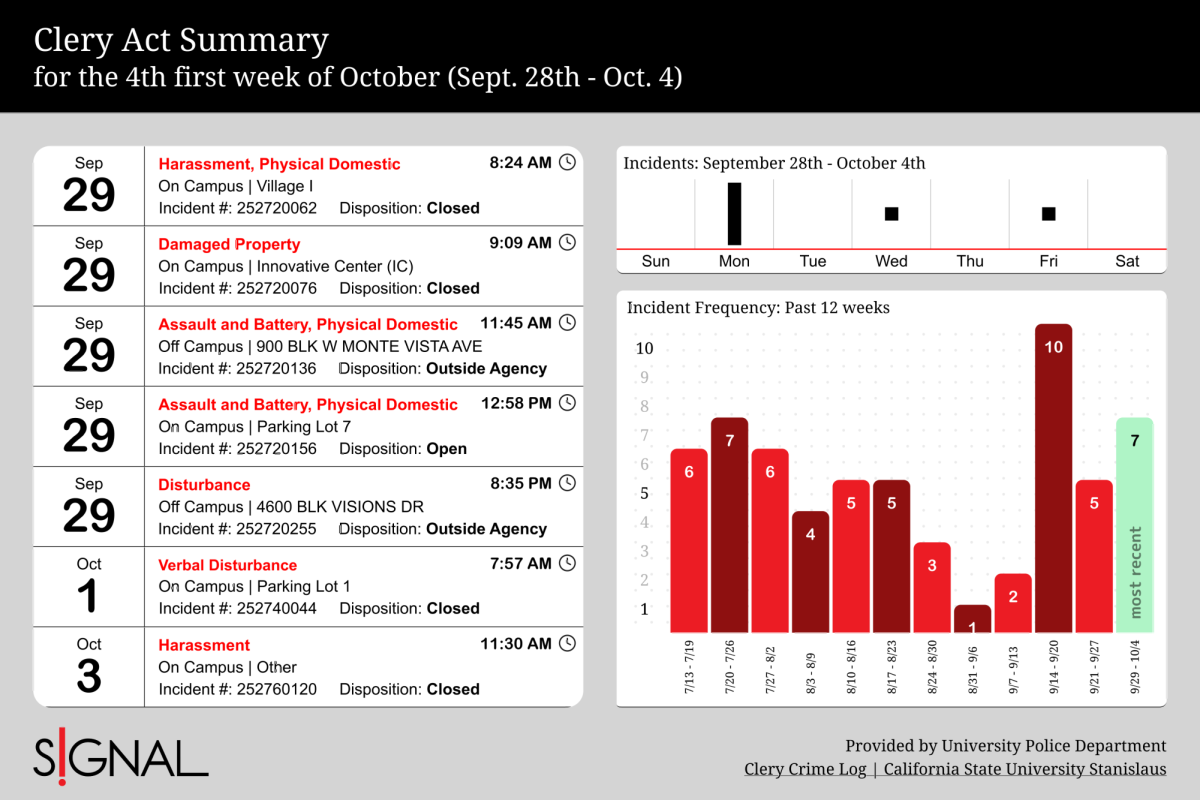In front of Main Dining, at the junction between the library, MSR, and the student center, half a dozen students arrange various types of produce on tables, preparing the Stan Fresh Market to offer students locally grown fruits, vegetables, and flowers.
Ripe strawberries sit beside bright orange kumquats; lemons and grapefruits practically glow in the sunlight. Everything on the tables, from the healthily green chard leaves to the bouquets of fresh-cut flowers, evokes springtime.
The last Stan Fresh Market of Spring 2024 was held on May 1 by the students of the Agricultural Markets and Pricing class. The previous two markets, held on March 6 and April 10, were the first Stan Fresh Markets to be held in person since the beginning of the COVID pandemic.
All of the produce sold at the markets were grown in Stanislaus State’s Sustainable Garden and on-campus orchard.
“It’s an outdoor garden,” says Johanna Hibma (Senior, Agriculture Business), one of the students who helped organize the market.
“There’s a lot of classes that participate and have the students go out [to the Sustainable Garden], and some of them have gardening plots out there as part of their classes and whatnot, so there’s a lot of involvement by the students,” Hibma said.
The Sustainable Garden is located directly south of the John Stuart Rogers Faculty Development Center and next to the Greenhouse.
According to Flint McGrath (Junior, Agriculture Business), Hibma’s classmate and fellow harvester, what makes the garden sustainable is its low pesticide usage, biodiversity, planting and wildflowers that attract pollinators, and reuse of organic matter such as using weeds as fertilizer.
One particular sustainable method McGrath describes includes spreading of walnut shells across pathways to curb weed growth rather than using pesticides—an undertaking he attributes to Stan State alumni and garden specialist Hector Vera, who was hired to oversee the garden in January 2023.
“It’s really cool to see, you know, what Hector has always kind of got going on in the garden,” says McGrath, “Between the Sustainable Vegetables class […] and then just a kind of a general crop rotation—it’s always happening, with carrots and beets and some cilantro. Cut flowers have been a really fun one.”
The cut flowers were a popular item at the May 1 market. Golden daisies, magnetic blooms, purple flower clusters, and baby’s breath were all hand-arranged into beautiful bouquets by Agricultural Markets and Pricing students.
Delia Vidal (Freshman, Liberal Studies) purchased a bouquet for her grandmother, as well as rosemary, grapefruits, and strawberries.
“I thought this was great,” Vidal says, referring to the market. “I think they should make it bigger. I like the prices, too, and I like that [the profits are] going back to the school. And also, my sister’s a big, like, FFA girly, so I support Ag in any way I can.”
The profits from the market are not the only thing being funneled back into the school. According to Dr. Agness Mzyece, the professor of the Agricultural Markets and Pricing class, any surplus produce left over after the market is sold back to Warrior Eats, who also provides refrigeration for the produce when needed.
For Mzyece’s students, the Stan Fresh Market is their collaborative semester project, one they have been working on since the beginning of spring semester.
According to Josue Segoviano (Freshman, Agriculture Business), another one of Mzyece’s Ag Markets students, students would connect either in-person or through Zoom to decide the roles. For Segoviano, his role was to help set up the market; for Hibma and Mcgrath, it was as harvesters.
“It’s a project for our class, so it’s something that we’re all very dedicated to—to make sure that we’re putting our best effort into it,” Hibma says.
This dedication is fostered by Mzyece’s emphasis on learning by doing.
“You know how they say, one hour of doing something, you learn more in one hour of doing something than in a whole lifetime of thinking about it, right?” Mzyece says. “So if you’re a student in a marketing class, and you sit in your chair and on your table, and your professor is telling you, oh, this is how companies think about marketing. This is how they make product decisions. This is how they make a decision about pricing, and packaging, and distribution, and stuff like that.”
“Well, it’s conceptual knowledge, which is okay. But then when we get the student out of that classroom and out of that chair, and then give them a product to sell, now they have to put that knowledge to practice,” Mzyece continued.
During the pandemic, it was because of this emphasis on simulating real-world business practices, that, according to Mzyece, the Ag Markets students devised a plan to host a drive-thru market, as they were not allowed to hold it in the quad due to COVID. Customers were able to place their orders online and pick up their produce in their own vehicles.
“So those are decisions that students have to make based on their circumstances,” Mzyece says. “So that’s more fun for them. And when you complement that with what they are learning in class, it kind of becomes more clear and lasts longer because, obviously, you have the experience attached to it. So that’s the main focus: how do we give students an experiential learning platform using the garden that we have?”
The Agricultural Markets and Pricing class is offered each spring semester. As such, the next Stan Fresh Market will be held in Spring 2025.


